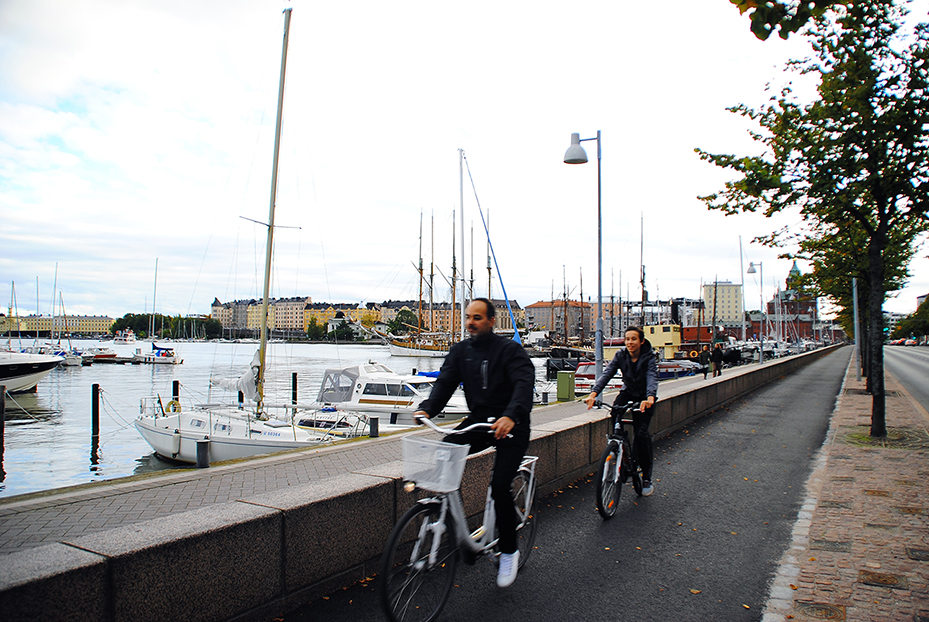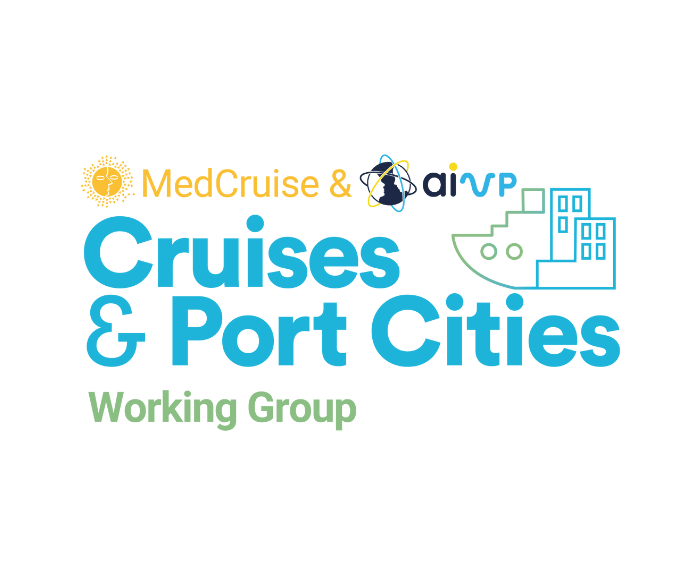The year 2020 has been a year of many changes, also for sustainable mobility. Talking with our members we identify several key words for the goal 3 of the AIVP Agenda 2030: Smart technology, multimodality, public spaces, cycling, co-construction, citizen engagement, sharing, autonomous vehicles. In this article we summarized the interviews and articles we have published about the topic, but don’t forget to read the original publications!
Urban mobility is at the same time one of the main challenges for port cities, but also one of the areas in which we have experienced greatest changes in the past decade. There has been an evolution from the unquestionable domination of cars for daily commutes using combustion engines, to the massive implementation of multimodal solutions, shared mobility services, improved public transport, electric powered cars, bicycles or scooters, bicycle lanes, etc. In port cities this evolution has also been visible from a logistic perspective. Although the changes have taken place at a slower rhythm, the innovative projects in last-mile logistics to reduce the carbon footprint of these operations are growing each year. In a bigger scale we also see ambitious plans to decarbonize transportation, once again investing in multimodality, to reduce the share of road transport connected to ports, and boost both water and rail for inland distribution of cargo. From the local context to the global or continental logistic networks, port cities are at the core of these changes.
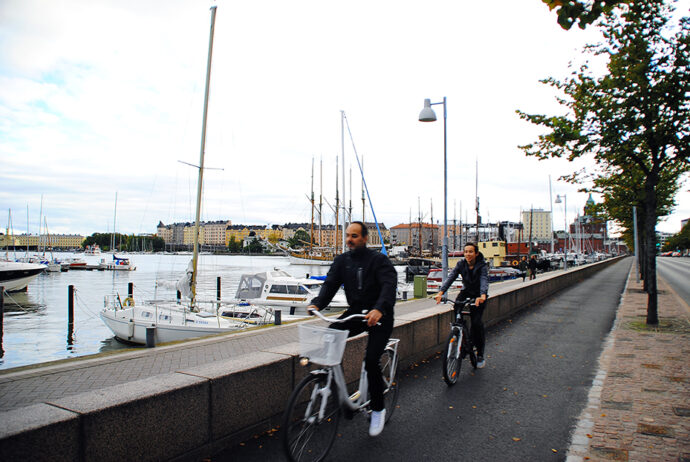
In 2020, the pandemic has accelerated the changes in this field. While e-commerce becomes more common, common people become more familiarized with the term “shipping”, get used to tracking their parcels, and better understand the importance of ports in their every-day lives. At the same time, the limitations to physical interaction and government advices to avoid close contacts with others, have also encouraged many to adopt bicycles as means of daily transportation, enhancing the importance of dedicated lanes and smart systems that facilitate e-bicycle sharing. Indeed “smart” port and city solutions open a myriad of possibilities towards sustainable mobility, as we will see in this dossier. Sustainable mobility is Goal 03 of the AIVP Agenda 2030 and the third goal discussed in the autumn of 2020. The interviews, articles and webinar showed many inspirational projects for port city leaders, showing how our members are innovating. They demonstrate that this is one of the goals that may be easier to achieve in 2030, we can only imagine the mobility technology we will have then!
Multi-scalar port mobility in Italy
The first article from the Dossier is by Systematica, in which they explain as experts in transport planning the articulation that must take place between the different scales that coexist in port cities. As the authors indicated, integration is the key word. The wider mobility systems of urban areas must be integrated with the local port activities that have specific infrastructure requirements and can generate traffic peaks affecting the quality of life of the citizens. The two projects they presented, Venice and Genoa in Italy, advocate for this integration, from the continental transportation networks, the TEN-T corridors, to the activities that take place on the waterfront.


Smart technology to improve mobility
Colas, a leader in the construction and maintenance of transport infrastructures, aims at addressing new mobility issues. Hence their decision to invest in “smart” technologies, such as the “Moov’Hub” application, a real-time flow management service offered to public authorities, businesses and citizens. Transparent access to data such as transit times, traffic congestion or CO2 impact is essential. Especially when construction works take place, port cities can quickly become congested. To avoid this, Colas has developed “Qievo” service, which is designed to plan material delivery itineraries, to guide truck drivers through optimized routes, and to provide real-time reporting. The key word is the reduction of negative externalities. The Port-City interface is a source of permanent logistical challenges, as its existence distorts the urban structure. Intermodality is an obvious solution to overcome these challenges, with road-rail connection for example, as in Libreville (Gabon). Mobility is part of the solution, and is not only a source of negative externalities: it can even bring new opportunities. To this end, Colas has developed “Wattway”, or photovoltaic roads. These fields of solar panels located on the roadway both produce energy and optimize available space! Experiments are being carried out in Reunion Island (France) and in the United States.
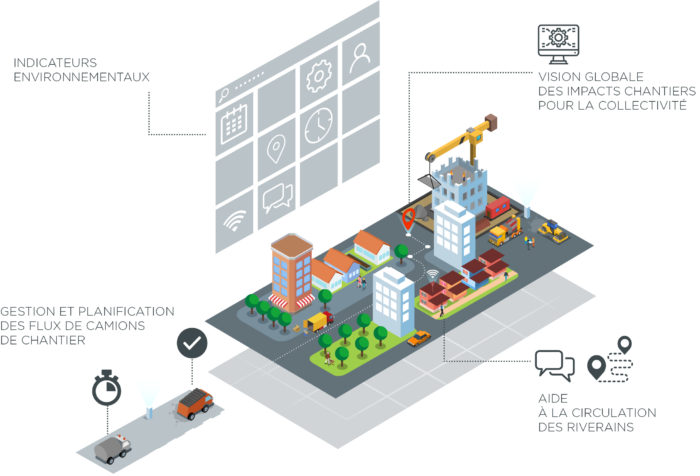
Public spaces to walk and cycle in Argentina
The importance of public spaces is today clearer than ever. In a year when big events, restaurants, cafes, or shopping malls were forbidden or heavily restricted, the public spaces like squares or parks were the only places where it was safe to meet other people or take a break from the confinement. Public spaces also play a key role in urban mobility, particularly for walking and cycling, as it is seen in the interview with Corporación Puerto Madero, from Buenos Aires. Their new project “Paseo del Bajo” includes 10 new hectares of squares, parks and promenades that encourage the citizens to use the bicycle and walk in safety.
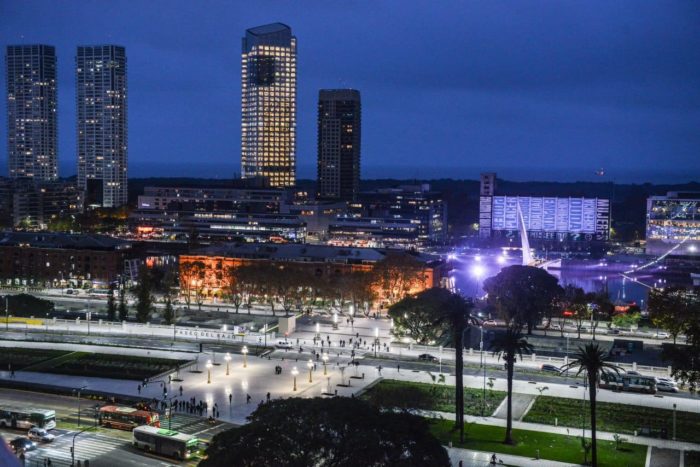
Digitization and co-construction for sustainable mobility in Halifax
Like many ports around the world, the Port Halifax is facing the challenge of maximizing its growth potential without increasing possible negative externalities such as road congestion. Since 2018 rail solutions and several digital tools for sharing real-time information with their customers but also with the larger community and the public have been implemented to address such a challenge and reduce port truck traffic through downtown Halifax. For them digitization of the port is a key strategy but it is not only about adopting smart technologies as they explained us: transparency and co-construction with your partners, stakeholders, and the larger community is essential to transform the entire Port ecosystem.
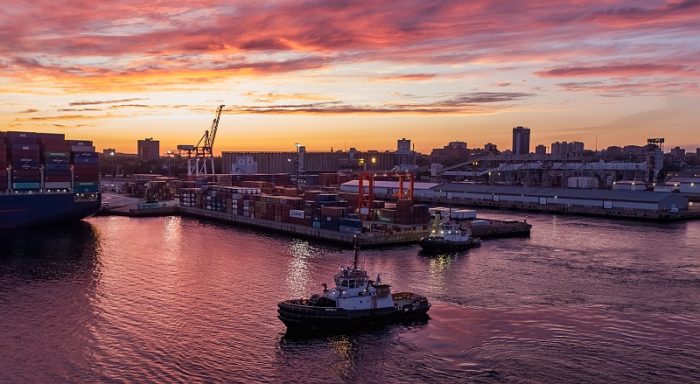
Clean, smart and integrated mobility in European port cities: the Civitas Portis project
Sustainable mobility is one of the priorities for the European Commission. Hence, there are several EU-financed projects focusing on this issue, fostering cooperation and sharing good practices between different cities. It is the case of the Civitas family of projects, of which one is focused on specific port-city mobility challenges, the Civitas Portis. As Dirk Engels explains in his article, the approach defended in the project, based on smart data sharing for better governance and planning, has produced clear positive results in the five cases: Aberdeen, Antwerp, Constanta, Klaipeda and Trieste. Additionally, AIVP hosted a webinar to discuss in detail two cases, Antwerp and Trieste, with experts from both port authorities and municipalities. In the discussion it was explicit that the correct use of smart data could facilitate the coordination between traffic data, producing better mobility plans and facilitating better choices from the citizens, but also that it is necessary to invest on behavioural changes of the users and companies.
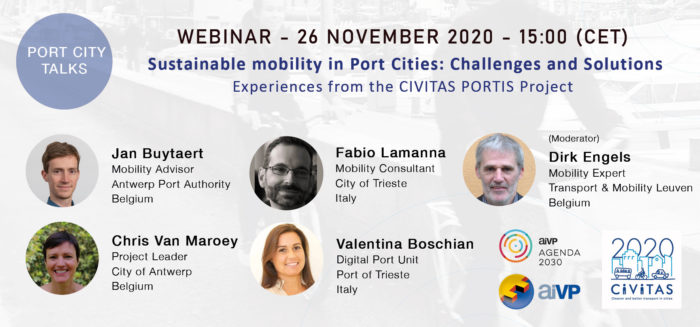
Cooperating with the city and the citizens in Málaga
In port cities hosting cruises or ferries, mobility challenges also include managing passenger flows. One example of this, is the case of Málaga, in Spain. As we learnt in the interview with the port authority, multimodality is key. One simple solution, if possible, is to place cruise terminals close enough to the city centre so tourists can walk directly to the historical monuments. Additionally, today, there are many ways to get from the terminals to the city, using traditional public transport or even new ones such as autonomous buses. However, as it was clear in the interview, all new solutions must be accompanied with dialogue actions, involving citizens and visitors.
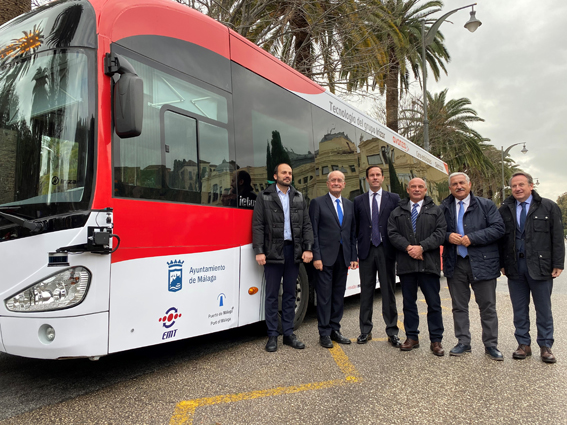
Recommended reading: the 15 Minutes city by Carlos Moreno
In this dossier we also briefly review the most recent book by AIVP Expert, Professor Carlos Moreno, entitled “From the Global City to the 15 Minute City”. His ideas for sustainable mobility have gathered the attention of leading news outlets, such as The Financial Times, The Guardian or even the World Economic Forum.

These inspirational articles provide plenty of examples for port cities from all over the world. Although each port city is different, the problems harming an efficient mobility are shared. Understanding the principles behind the good practices will facilitate its replication in other regions. We wish you a fruitful reading!

